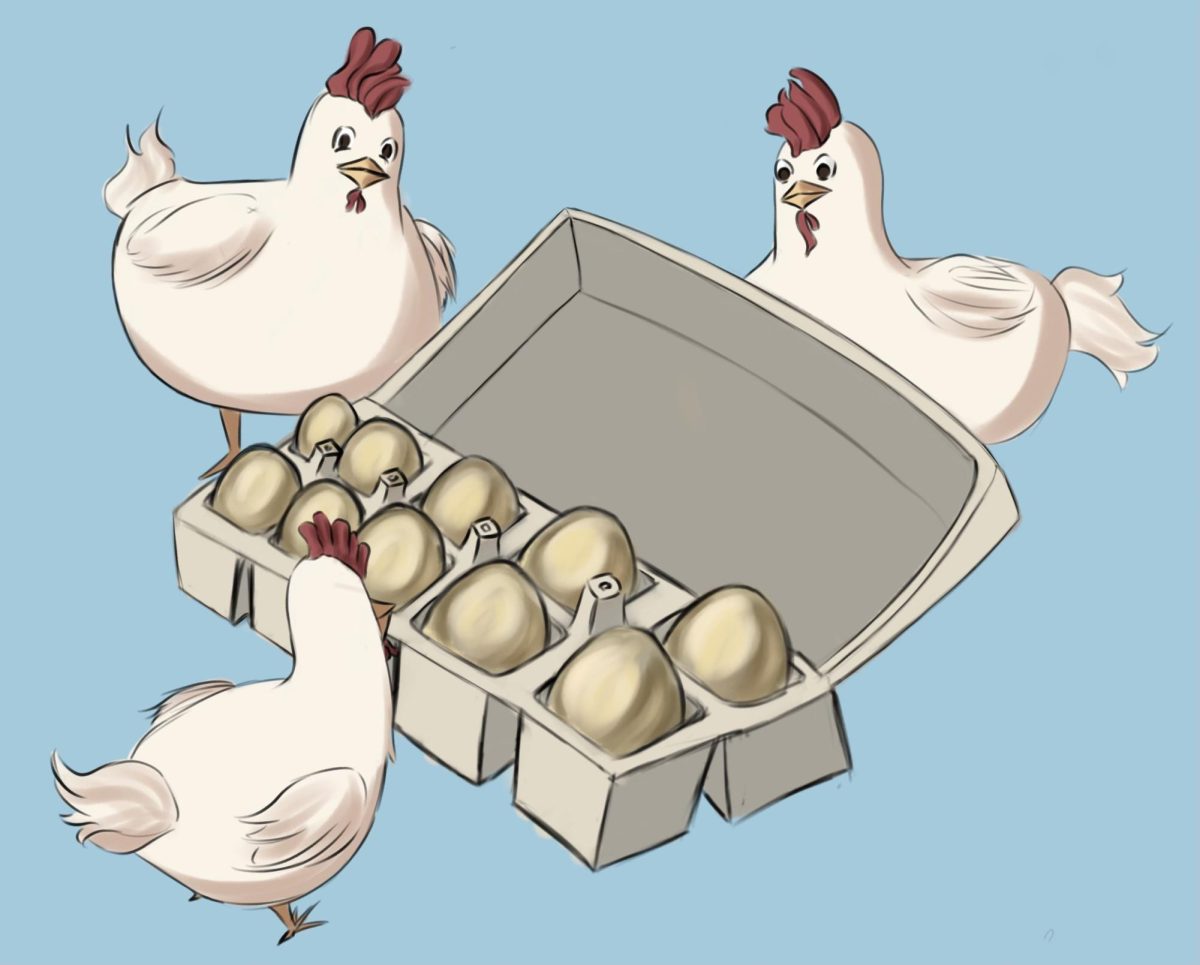From Jan. 2024 to Jan. 2025, the average price of a dozen eggs has risen by 53% according to the Bureau of Labor Statistics. Since then, the prices on eggs have only continued to rise.
The main contributing factor to the increase in egg prices has been attributed to the supply shock caused by this year’s outbreak of H5N1 influenza, a subtype of the more commonly known bird flu. According to the Center for Disease Control and Prevention (CDC), the virus has been isolated to around 100 species of wild birds but is very contagious and has made its way to domesticated birds like chickens, ducks, and turkeys.
“The disease that we’re talking about is highly pathogenic avian influenza. The chickens that are infected will die, but not all birds, when they get this infection, will die. Some species have different reactions to being infected as do some of the mammals. Some may not show any clinical signs at all,” Pomeroy Chair in Avian Health and professor for the Department of Veterinary and Biomedical Sciences Carol Cardona said.
While the virus is highly deadly to birds, the risk to public health remains low as cases of avian influenza in humans normally exist only with those who have direct contact with affected birds. Furthermore, the risk of infection in terms of poultry products is also low. However, while the risk of contracting the virus is low for humans, the mortality of the birds does affect the ever-growing price of eggs. “Eggs have historically been a sort of cheaper source of protein, so if you’re thinking about trying to meet the dietary guidelines of America, that’s increasing the cost of a nutritionally adequate diet,” University of Minnesota Assistant Professor of Applied Economics Charlotte Ambrozek said. “That’s what the value of SNAP [Supplemental Nutrition Assistance Program] food stamps is tied to… so it really can impose a constraint on low-income families.”
Avian influenza has affected poultry in years past, but why has the price of eggs risen so exponentially now? “I think this is a bad outbreak and I think there’s also been a change in the capacity,” Ambrozek said. “If you think about the folks who would normally be helping to keep track of this kind of outbreak [like] folks at the CDC and USDA, there are fewer people in those jobs… so the capacity reduction on the federal agency side, combined with [the avian influenza outbreak] is maybe exacerbating the shock.”
“When a bird is infected, one of the very first clinical signs is that they stop laying eggs along with death. So, that reduces the chances that an infected egg could make it to grocery shelves,” Cardona said. Further public health measures include testing birds for the virus before they are marketed and also egg holds. “Egg producers hold eggs before they go to market. If there’s any chance they could be infected… they have to go through a special procedure. The special procedure [starts] when we know the flock is negative, when they lay the egg. Then, the flock is tested again two days later. If that flock is negative two days later, then [we can say] with 99% confidence that those eggs are all negative.”
The cases of H5N1 influenza come with conversation on how to stop the virus. “[Vaccines] are used in certain other countries, and that’s one of the big fights right now… some parts of the poultry industry really want to get vaccines to protect their birds, and other parts of the poultry industry don’t want that because it would interfere with their ability to trade,” Cardona said. “I think [eventually] we’re going to see vaccinations. We’re going to see more precise ways to stamp out one barn and identify how to stop barn-to-barn transmission.”
This piece was originally published in Zephyrus’ print edition on March 27, 2025









